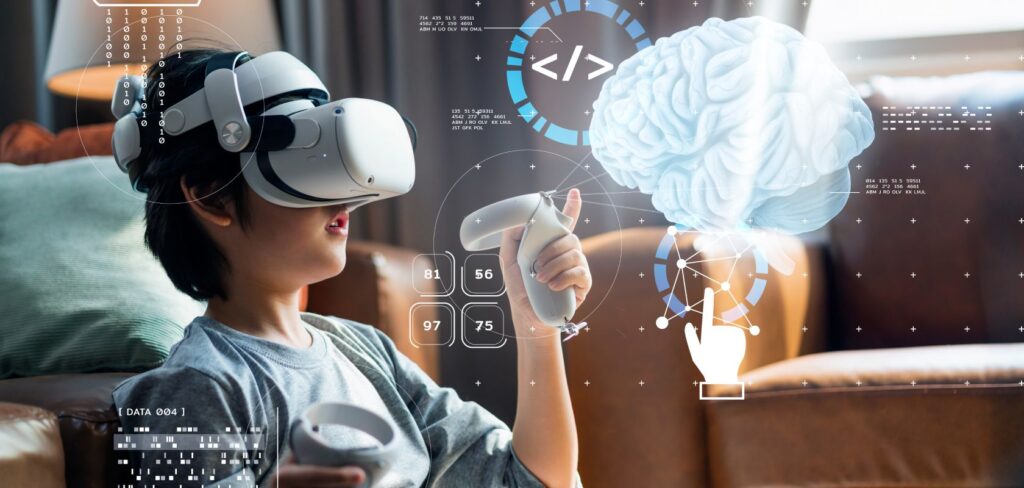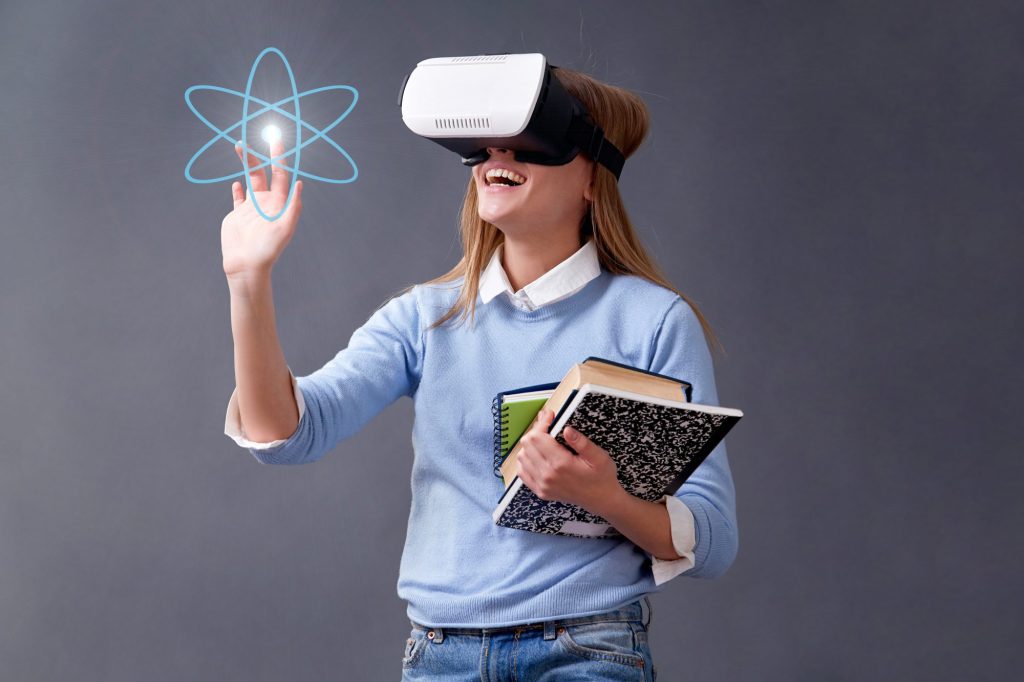Virtual Reality (VR) has shown great promise in revolutionizing education by providing immersive and interactive experiences. Here are several ways in which virtual reality benefits education:

- Engaging Learning Environments:
- VR creates realistic and immersive learning environments that engage students more effectively than traditional methods. Students can explore historical sites, travel to different countries, or even journey inside the human body, making learning more exciting and memorable.
- Experiential Learning:
- Virtual Reality allows students to experience things firsthand, fostering experiential learning. For instance, students can conduct virtual science experiments, explore outer space, or practice skills in a simulated environment, providing a hands-on learning experience.
- Enhanced Understanding of Complex Subjects:
- Abstract or complex subjects become more tangible and easier to understand in a virtual environment. For example, students studying anatomy can take a virtual tour inside the human body, visualizing organs and biological processes in 3D.
- Global Learning Opportunities:
- VR enables global collaboration and learning. Students from different parts of the world can participate in shared virtual classrooms, fostering cultural exchange and breaking down geographical barriers.
- Individualized Learning:
- Virtual Reality allows for personalized and adaptive learning experiences. Teachers can tailor content to individual students’ needs and pace, providing a more effective and customized educational approach.
- Skill Development:
- VR provides a platform for practicing and honing specific skills in a risk-free environment. This is particularly beneficial for fields like medicine, aviation, and emergency response, where hands-on experience is crucial.
- Increased Student Engagement:
- VR applications make learning more engaging and fun, capturing students’ attention and encouraging active participation. This heightened engagement can lead to better retention of information.
- Accessibility and Inclusivity:
- VR can make education more accessible to students with various learning needs. It allows for the creation of diverse learning experiences that cater to different learning styles, making education more inclusive.
- Virtual Field Trips:
- VR enables students to take virtual field trips to places that may be challenging or impossible to visit physically. This expands their understanding of the world and provides a cost-effective alternative to traditional field trips.
- Professional Development for Teachers:
- Teachers can use VR for their professional development, attending virtual workshops and conferences to enhance their teaching skills and stay updated on the latest educational practices.
While virtual reality in education has great potential, it’s essential to address challenges such as cost, access, and content development. As technology continues to advance, VR has the potential to transform the educational landscape and make learning more engaging and effective.

